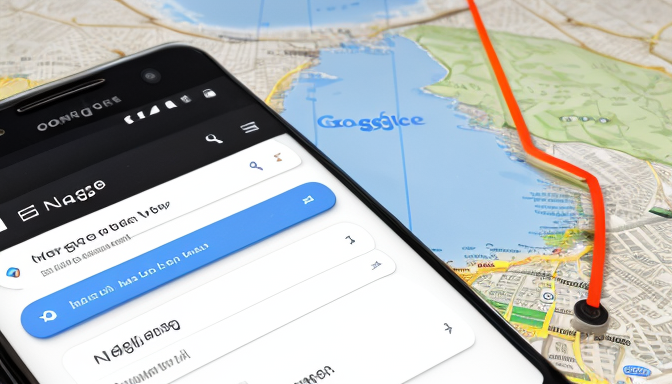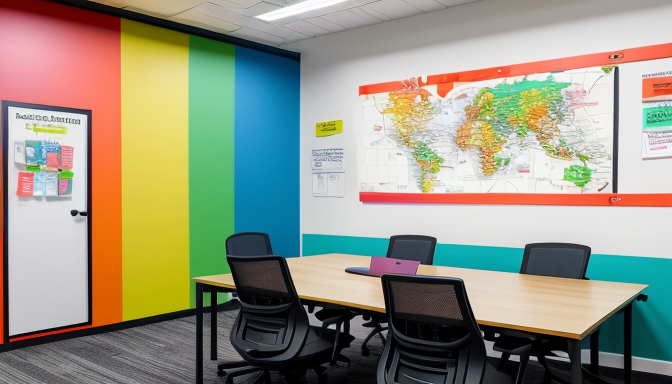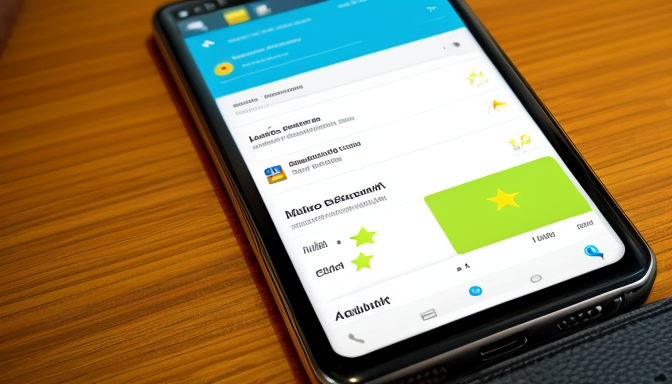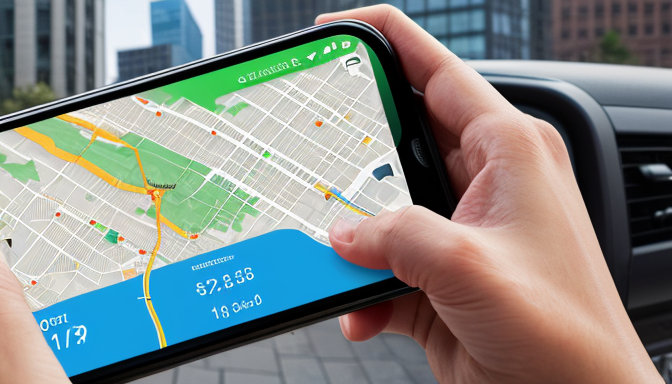
Google Maps for Mobile
In today’s fast-paced world, having the ability to navigate easily on mobile devices is crucial. Think about it: how often do you pull out your phone to find directions? The importance of optimizing maps for mobile cannot be overstated. It’s not just about getting from point A to point B; it’s about making the journey as smooth as possible. This article explores essential strategies to enhance map usability on mobile devices, focusing on tailoring, testing, updating, and tracking performance for an improved user experience.
Customizing maps for mobile users involves understanding their unique needs. Have you ever tried to use a map app on a tiny screen? It can be frustrating! That’s why it’s vital to ensure that the interface is intuitive. When you’re on the go, you need quick access to information without clutter. Consider these key points:
- Touch Interactions: Make sure buttons are big enough to tap easily.
- Clear Labels: Use simple, readable fonts.
- Essential Features: Focus on what users need most—like real-time traffic updates.
By tailoring maps specifically for mobile users, you not only enhance usability but also create a more enjoyable experience. Remember, a well-designed mobile map can turn a stressful situation into a breeze.
Conducting thorough testing of maps on various mobile devices is crucial. Why? Because what works on one device might not work on another. Imagine planning a road trip, only to find out your navigation app crashes halfway through. That’s a nightmare! To avoid such issues, you should:
- Test on multiple operating systems.
- Check for bugs that could disrupt user experience.
- Simulate different network conditions.
By ensuring that all features work seamlessly, you provide users with a smooth and efficient navigation experience. It’s like tuning a car; every part needs to work together for a great ride!
Regularly updating maps is essential to maintain accuracy and enhance functionality. Think of it as a garden; if you don’t water it, it will wither. Similarly, maps need care. This includes:
- Incorporating user feedback to improve features.
- Adding new points of interest.
- Ensuring compatibility with the latest mobile operating systems.
By keeping maps fresh and relevant, you not only improve user satisfaction but also keep them coming back. After all, who doesn’t love a map that feels alive and responsive?
In conclusion, optimizing maps for mobile is not just a technical task; it’s about creating a user-friendly experience. By tailoring, testing, and regularly updating maps, you ensure that users can navigate with ease and confidence. So, the next time you think about mobile maps, remember the importance of optimization and how it can transform the way we travel.

Tailor Maps for Mobile Users
When we talk about optimizing maps for mobile, the first step is to understand that mobile users have different needs compared to desktop users. Think about it: when you’re on the go, you want quick, easy access to information without any fuss. This means that tailoring maps for mobile users is not just a good idea; it’s essential.
Imagine trying to navigate a complex map on a tiny screen. Frustrating, right? That’s why the interface must be intuitive. Users should be able to zoom in and out with ease, pan around, and quickly find what they’re looking for. A cluttered map can lead to confusion, so it’s vital to keep things simple. Use clear icons and labels. Make sure that touch interactions are smooth. If a user has to poke at the screen multiple times just to get a location, they might give up and go somewhere else.
Another important aspect is to optimize features specifically for smaller screens. For instance, consider using a responsive design. This means that the map should adapt to the size of the screen automatically. If you have a feature that works great on a desktop, but is a hassle on mobile, it’s time to rethink that feature.
Additionally, think about the context in which users will be using these maps. Are they looking for directions while walking? Or are they driving? Each scenario requires different features. For walking, users might want public transport options, while drivers may need real-time traffic updates. Tailoring maps for mobile users means considering these different scenarios and providing relevant information at their fingertips.
Incorporating user feedback is also a game changer. What do users like? What frustrates them? By actively seeking this feedback, you can make adjustments that enhance the overall experience. Perhaps users want a feature that shows nearby restaurants or gas stations. By listening to them, you can add features that genuinely make their lives easier.
In summary, tailoring maps for mobile users is all about understanding their unique needs and preferences. It’s about creating an interface that is easy to use, optimizing features for smaller screens, and considering the context in which the maps will be used. Remember, the goal is to provide a seamless experience that keeps users engaged and satisfied. So, as you work on optimizing maps for mobile, keep these principles in mind!
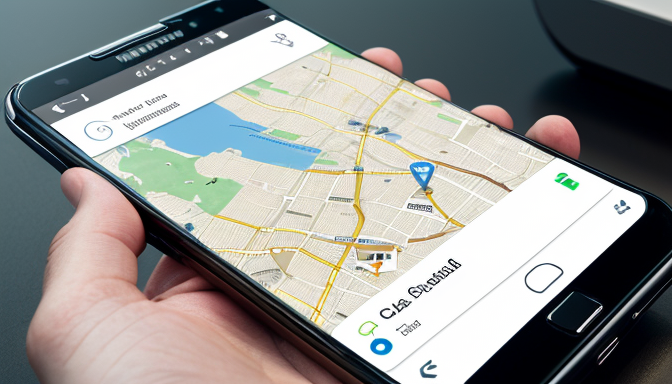
Test Maps for Mobile Functionality
Testing maps for mobile functionality is like checking the engine of a car before a long road trip. You want everything to run smoothly, right? If you skip this step, you might end up lost or frustrated. So, how do you ensure your maps are ready for mobile users? Let’s dive into some key strategies.
First off, it’s essential to test on various devices. Different smartphones and tablets have unique screen sizes and operating systems. A map that works perfectly on one device might be a nightmare on another. Imagine trying to read a tiny text on a small screen. Not fun! So, grab a few devices—Android, iOS, and others—and see how your map performs. Pay attention to:
- Loading Speed: Does the map load quickly? Users won’t wait around.
- Zoom Functionality: Can users easily zoom in and out? Pinching should be smooth.
- Touch Responsiveness: Are the buttons easy to tap? Test those fingers!
Next, let’s talk about real-world scenarios. Testing in a controlled environment is great, but it doesn’t replicate actual usage. Take your map outside. Try using it while walking or driving. This will help you understand how users interact with it in their daily lives. Think about it: Are there distractions? Is the interface user-friendly? These factors can make or break the user experience.
Moreover, gather feedback from actual users. This is gold! You might think your map is perfect, but users can offer insights you never considered. Create a small group of testers. Ask them to use the map and provide their thoughts. What did they like? What didn’t work? You’ll be surprised by what you learn!
Finally, don’t forget to track performance. Use analytics tools to see how users interact with your map. Are they getting lost? Are they using specific features more than others? This data is crucial. It helps you identify areas for improvement. After all, the goal is to enhance the user experience. Remember, testing is not a one-time deal. It’s an ongoing process. Regular updates and checks will keep your map in top shape.
In conclusion, testing maps for mobile functionality is vital. It ensures that users have a seamless experience. So, take the time to test, gather feedback, and make adjustments. Your users will thank you for it!

Update Maps for Mobile Optimization
Regularly updating maps is essential for mobile optimization. Why? Because the world changes fast. New roads pop up, businesses open, and sometimes, places just disappear. If your maps aren’t up-to-date, users may find themselves lost or frustrated. Imagine trying to find a new restaurant, only to discover it’s not on the map. That’s a sure way to lose users!
To keep your maps relevant, consider these strategies:
- Incorporate User Feedback: Users often provide valuable insights. Listen to their experiences. If they mention a missing location or a feature that doesn’t work, take action!
- Add New Features: Technology evolves. New features can enhance user experience. Think about integrating voice navigation or real-time traffic updates.
- Ensure Compatibility: With constant updates in mobile operating systems, your maps should be compatible with the latest versions. This prevents glitches that could frustrate users.
But how often should you update? It’s a good idea to review your maps at least every few months. This keeps the information fresh and ensures users have a great experience. Think of it like watering a plant. If you forget to water it, it wilts. Similarly, your maps need care to thrive.
Another crucial aspect of updating maps for mobile optimization is testing. After making changes, test them on various devices. Different screens can display maps differently. You want to ensure everything looks good and functions well, whether on a small smartphone or a larger tablet. Imagine trying to navigate a tiny map on a big screen. It’s confusing, right? Testing helps avoid such issues.
In conclusion, updating maps for mobile optimization is not just about keeping up with changes; it’s about enhancing user experience. By incorporating feedback, adding features, and ensuring compatibility, you create a reliable tool for your users. Remember, a well-maintained map is like a trusted friend. It guides you, helps you, and makes your journey enjoyable.
Frequently Asked Questions
- Why is it important to tailor maps for mobile users?Tailoring maps for mobile users is crucial because it enhances usability and ensures that the interface meets the unique needs of users on smaller screens. Think of it like adjusting a recipe for a smaller pot; the ingredients and cooking times need to be just right for the best results!
- What are some key features to optimize for mobile maps?When optimizing mobile maps, focus on features like touch-friendly controls, zoom capabilities, and a simplified layout. It’s all about making navigation as smooth as sliding down a hill on a sled—effortless and fun!
- How can I effectively test maps for mobile functionality?To test maps effectively, use a variety of mobile devices and screen sizes. Conduct real-world scenarios to see how users interact with the map, ensuring everything works seamlessly. It’s like testing a new ride at an amusement park—you want to make sure it’s safe and enjoyable!
- How often should maps be updated for optimal performance?Maps should be updated regularly, ideally every few months, to incorporate user feedback and new features. Keeping things fresh is like changing the playlist at a party; it keeps users engaged and coming back for more!
- What role does user feedback play in mobile map optimization?User feedback is invaluable; it provides insights into what works and what doesn’t. It’s like having a trusted friend give you advice on your outfit before you head out—sometimes, a fresh perspective can make all the difference!
- Are there specific tools for tracking map performance on mobile?Yes, there are several analytics tools available that track user interactions and performance metrics. Tools like Google Analytics and Mapbox can help you understand how users engage with your maps, guiding your optimization efforts like a compass on a journey!

